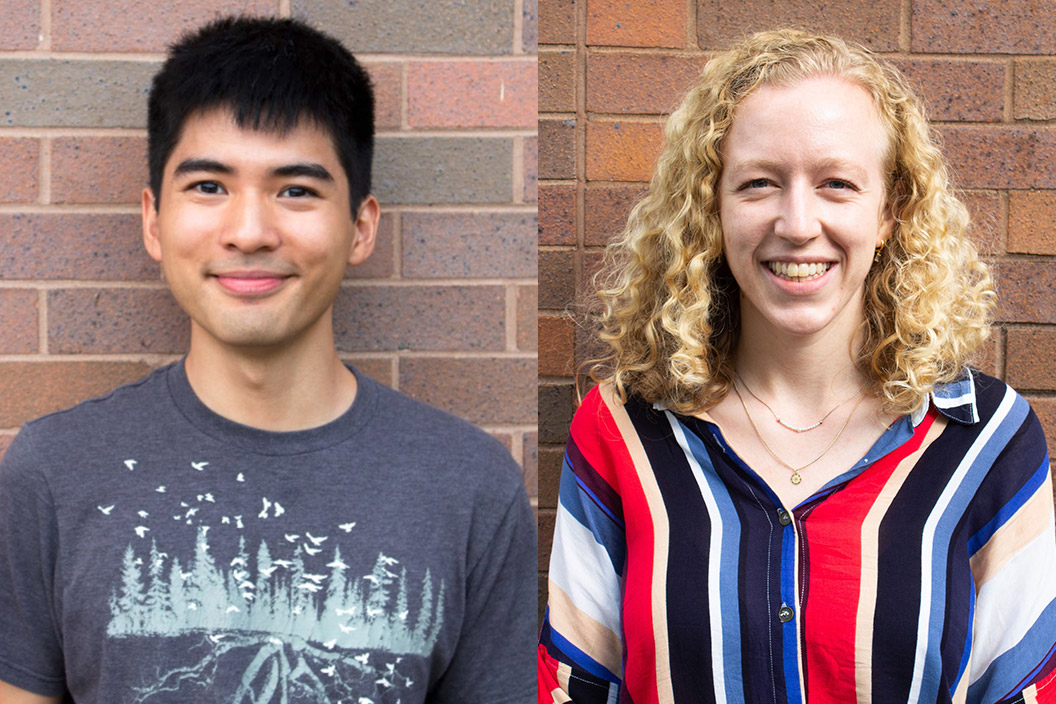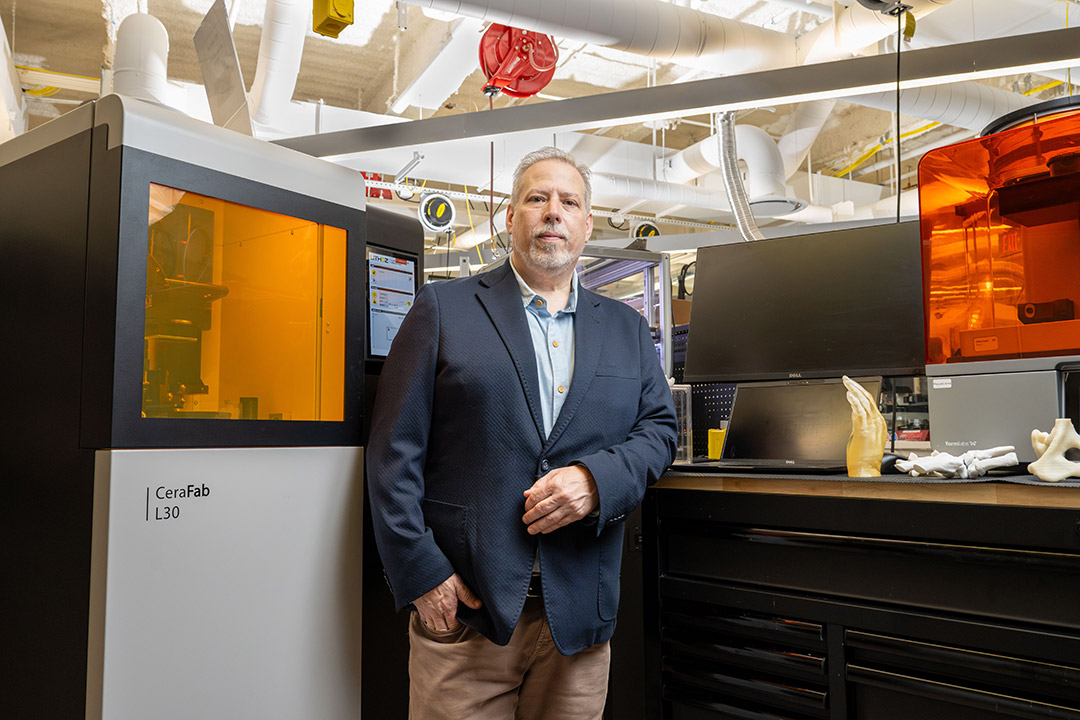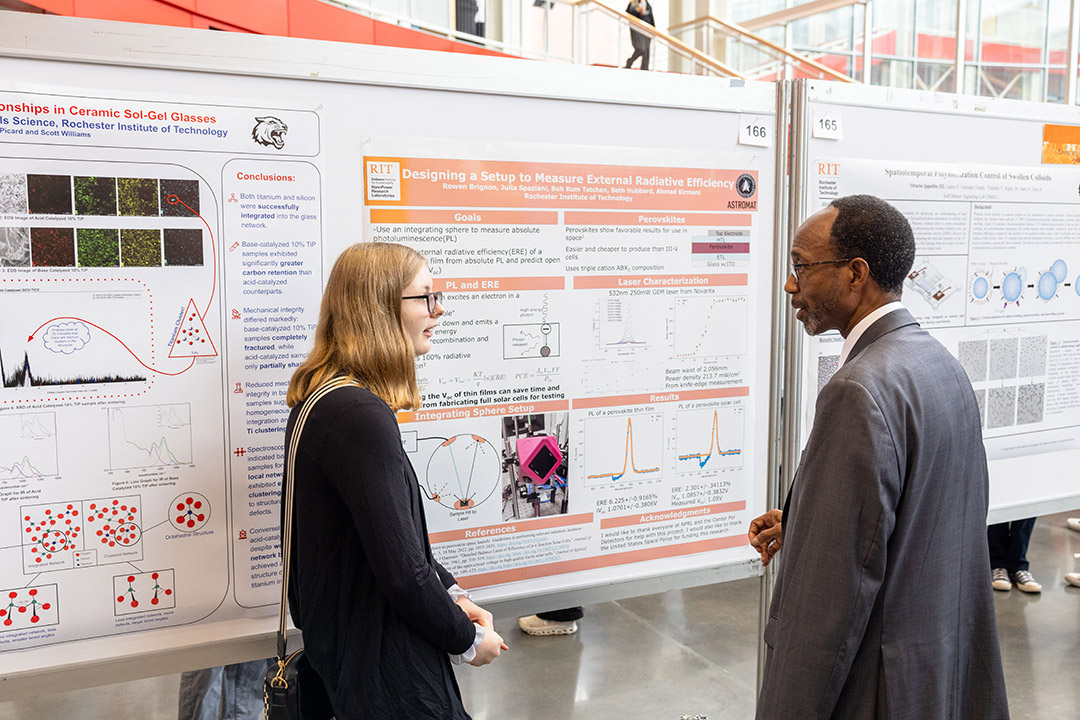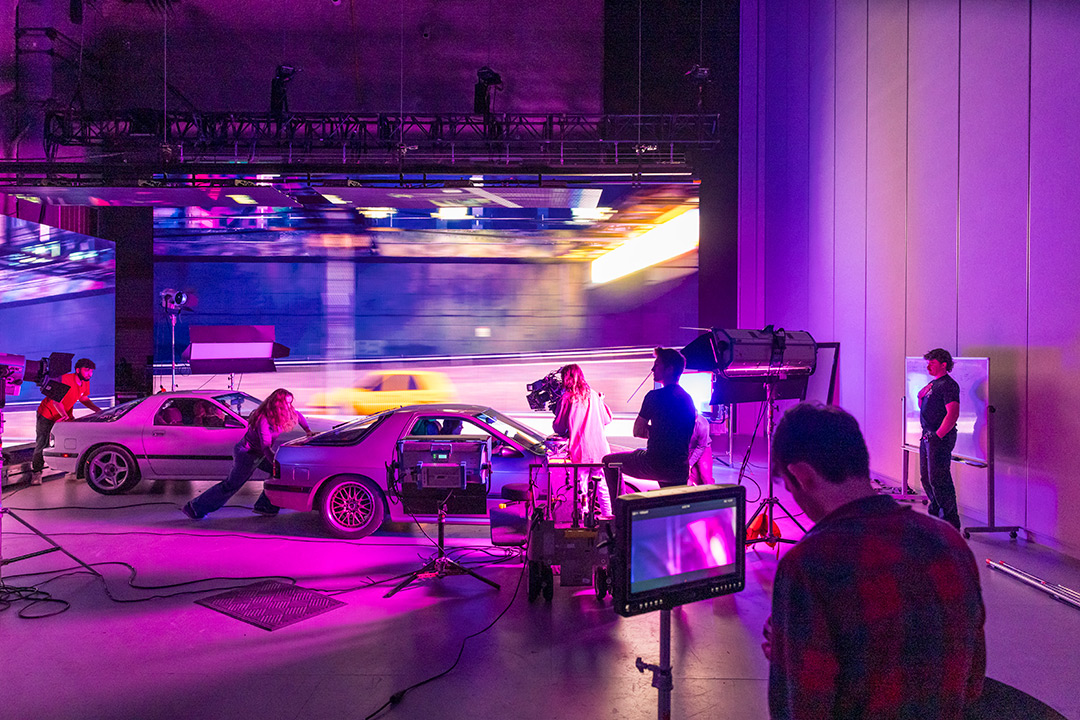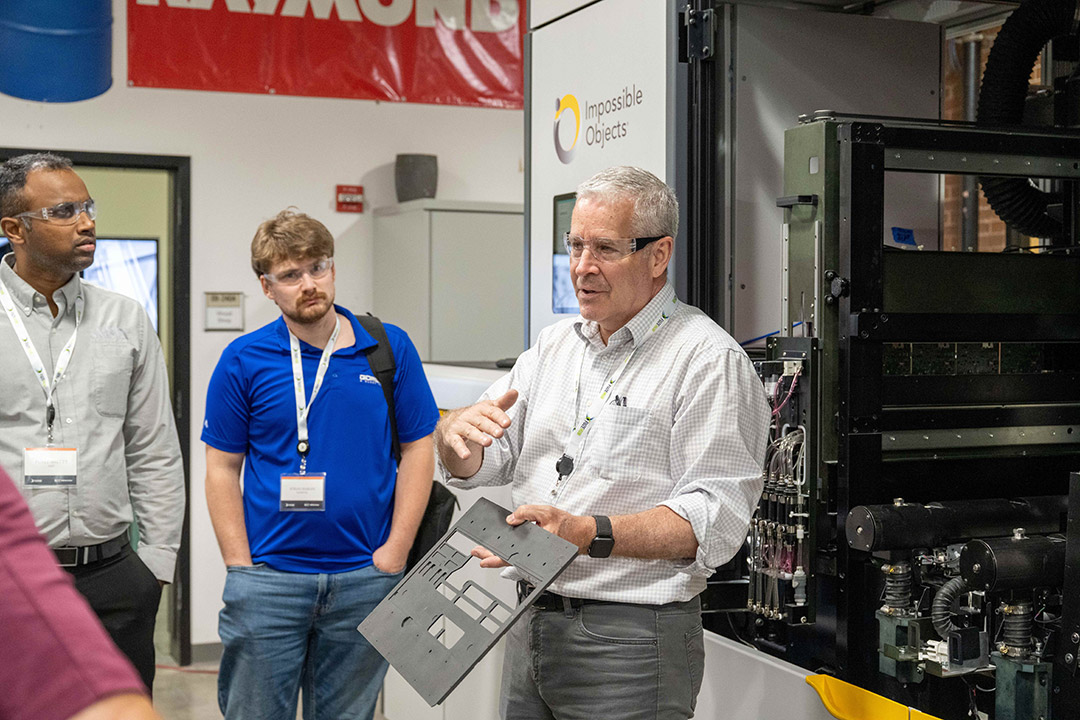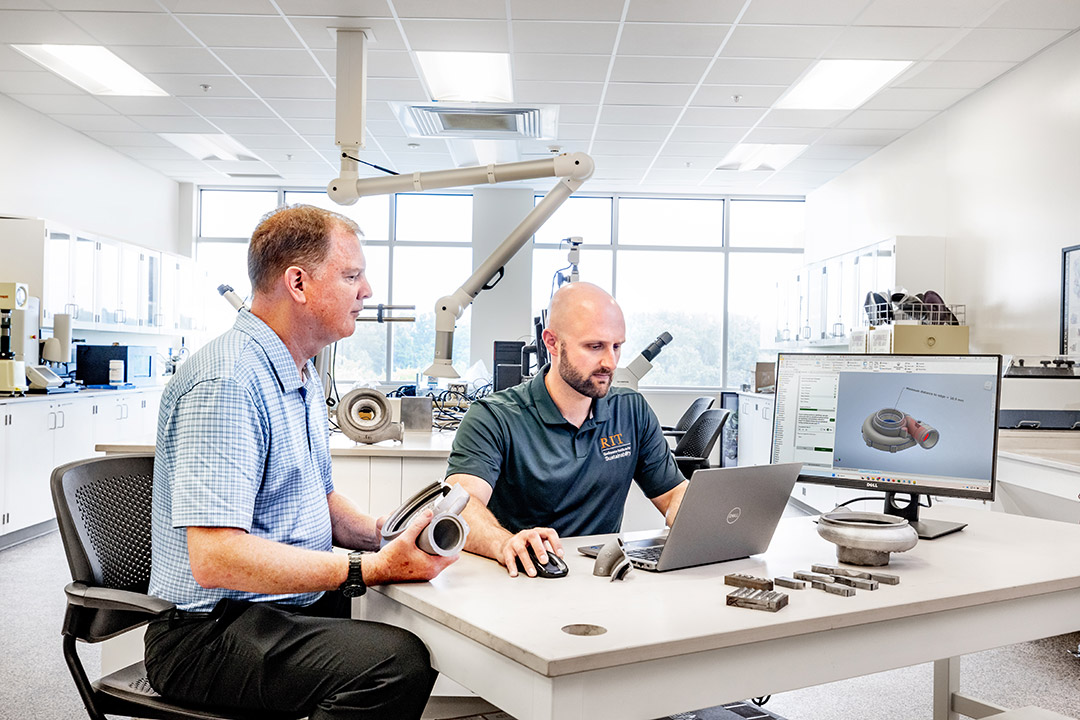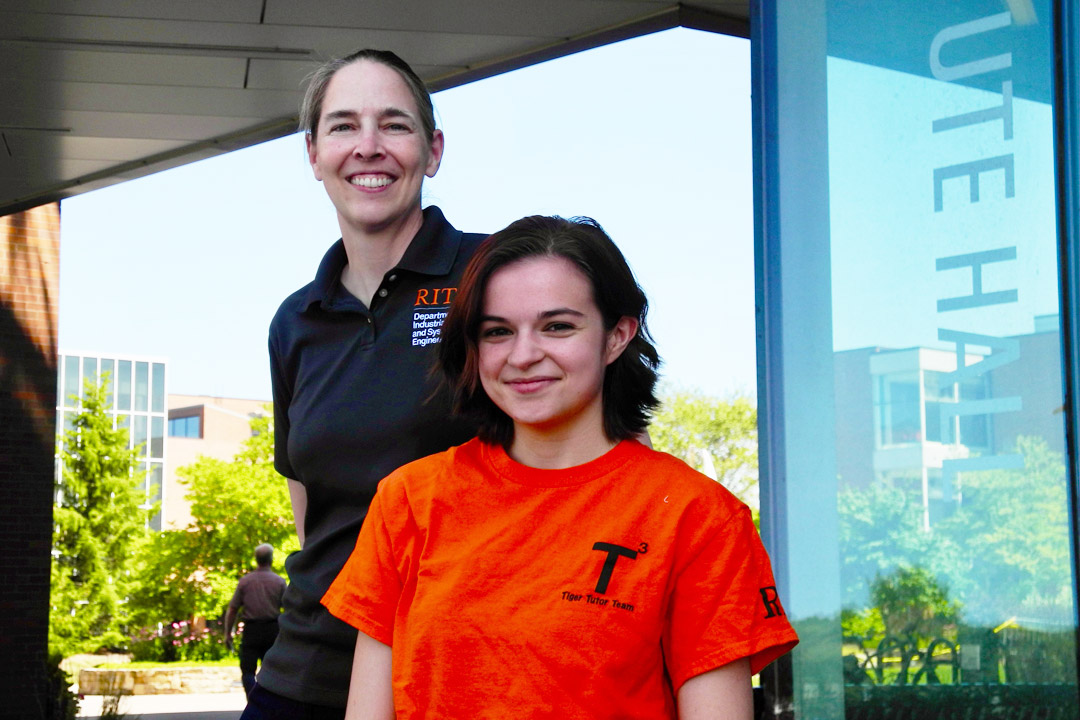Astrophysical sciences and technology Ph.D. program has two Future Investigators in NASA Earth and Space Science and Technology awardees

Provided
Allen Wen, left, and Sadie Coffin, right, had proposals accepted by NASA for graduate research funding. RIT is one of just two schools nationwide to have more than one FINESST proposal in astrophysics accepted.
Students Allen Wen and Sadie Coffin wrote two of 24 proposals accepted in the astrophysics category out of 456 submissions. Wen, advised by Professor Yosef Zlochower from the School of Mathematics and Statistics, will be modeling multiwavelength signals from binary neutron star mergers. Coffin, under the direction of Associate Professor Jeyhan Kartaltepe from the School of Physics and Astronomy, will be leveraging citizen science measurements to efficiently identify galaxy pairs.
FINESST awardees must be the primary author of the research and will receive $50,000 per year for up to three years.
RIT is one of just two schools nationwide to have more than one FINESST proposal in astrophysics accepted, and those two are in two different research centers associated with the Ph.D. program: The Center for Computational Relativity and Gravitation and the Laboratory for Multiwavelength Astrophysics.
“It speaks to the emphasis on excellence that we have in the program,” said Zlochower. “It’s unusual to get one student winning. Two is quite remarkable.”
In 2017, the first binary neutron star merger that detected both gravitational waves and a light signal from the same event was observed. That left a lot of data to be analyzed and explained. Wen will be creating big simulations to try to answer why the light signal looked the way it did, what different things could be active at the sight of the merger, and how these events can impact the light signals we observe.
He credits the entire research group with helping him prepare a successful proposal.
“We have a very open and collaborative environment,” said Wen. “I could get help from other grad students, junior researchers, and professors and get all sorts of feedback. The collaboration helps in both writing this one proposal and in day-to-day research, as well.”
Coffin is enlisting citizens to be trained and then to help comb through spectroscopic data to study galaxies through the Redshift Wrangler project. The project uses volunteer contributions to identify and analyze galaxy pairs at high redshift. Previous studies on galaxies have limited sample sizes, but using citizen science helps astronomers comb through data faster.
“We have this problem that the spectra we have right now are somewhat manageable, but over the next several years, we’re going to be inundated because there will be a lot of instruments providing millions of spectra,” explained Kartaltepe. “Nobody will be able to look at every single object anymore. Projects like this where you can crowdsource some of the measurements can be really useful.”
The FINESST funding for the project will also help bring real science to people around the world, hopefully growing an interest in the overall work and making high-level research available to anyone.
“I’m really excited about making science more open,” said Coffin. “We welcome anyone to be a part of our scientific research. We benefit from diverse perspectives. It’s fun to see the different paths to studying these big questions about the universe.”



